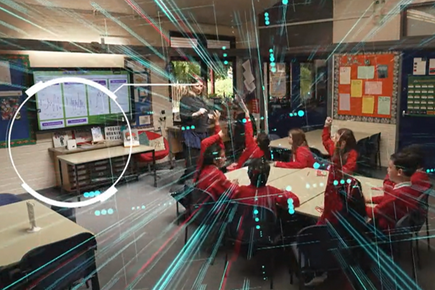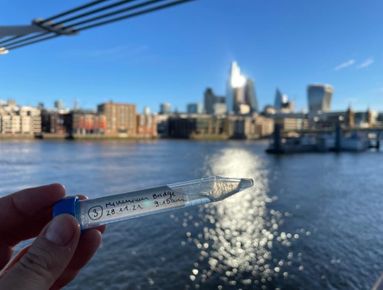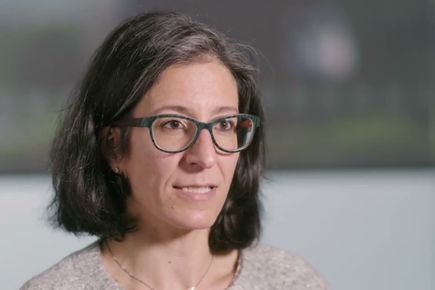Imperial experts in environmental science, ecology, aerosol science, and planetary health are contributing to:
- Surveillance and forecasting to 1) detect/predict infection threats before they become a risk (the first line of defence against pandemics) and 2) monitor the environment in a pandemic situation (e.g., to determine how infection spreads within the environment, water and sewage systems, transport settings, schools, healthcare settings, and homes).
- The understanding of the planetary, ecological, and zoonotic influences and sources of a pandemic.
Experts working in this area
Environmental monitoring and surveillance
-
Professor Wendy Barclay: Investigating viral emissions into the air and environment. Including healthcare settings, households and transport hubs. Example (in Covid): COVID-19 testing on London’s transport network.
-
Dr Leon Barron: Environmental monitoring of water, air and soil for changing risks and impacts of chemicals used by communities (including antibacterials, pesticides and antivirals).
-
Dr Henry Burridge: Air quality and fluid mechanics for the built environment, including ventilation in schools. Examples (in Covid): PROTECT COVID-19 National Core Study, CO-TRACE study, School's Air Quality Monitoring for Health and Education (SAMHE) project.
- Professor Fan Chung: Impact of air pollution on lung function. Example (in Covid): Airborne transmission of SARS-CoV2 in public spaces (supermarkets, schools, streets), including viral dispersal by piggybacking on vehicle pollution and dust.
- Professor Christl Donnelly: Surveillance systems (including consideration of sources of bias); ecology of wildlife (including density estimation and ranging behaviour).
-
Professor Denis Doorly: Fluid mechanics and aerosols. Example (in Covid): Aerosol extraction device for use in COVID-19 surgical tracheotomy.
-
Professor Nick Grassly: Disease surveillance; global wastewater surveillance for pathogens with pandemic potential (e.g. polio, typhoid, pandemic pathogens).
-
Dr David Green: Environmental sampling and air quality in London, including in transport hubs. Example (in Covid): COVID-19 testing on London’s transport network.
- Professor Alison Holmes: Surface and air contamination in acute healthcare setting during pandemic waves.
- Professor Paul Kellam: Virus genomics, genomic epidemiology, and outbreak control; impact of animal reservoirs.
-
Professor Frank Kelly: Environment, water, and air pollution. Example (in Covid): Detecting Covid-19 in the environment.
-
Professor Azeem Majeed: Surveillance. Example (in Covid): Use of wastewater monitoring to estimate the spread of Covid-19 in schools and the wider community.
-
Dr Jonathan Otter: Sampling of the environment to detect SARS-CoV-2.
-
Professor Christopher Pain: Fluid dynamics, particle and airflow modelling related to infection spread, transmission risk, and impact of ventilation in enclosed spaces (e.g., schools, transport, buildings). Example (in Covid): Simulations of COVID-19 transmission in public spaces.
-
Professor Steven Riley: Spatial transmission processes, contact patterns and complex exposure histories; surveillance. Example (in Covid): REACT-1 study.
-
Dr Antonis Sergis: Laser optics and software to study aerosol generation, e.g., via dental care procedures.
-
Dr Anika Singanayagam: Household transmission of respiratory viruses; protocol for sleeper household transmission study to be activated in the event of a pandemic.
-
Professor Shiranee Sriskandan: International spread; school transmission studies. Example: Rapid expansion and international spread of M1UK in the post-pandemic UK upsurge of Streptococcus pyogenes.
-
Dr Erik Volz: Sample design and genomic surveillance systems.
-
Dr Jiansheng Xiang: Engineering modelling. Example (in Covid): Modelling airflow of breathing and mechanics of material to test the effectiveness of face masks for COVID-19.
Ecological, planetary, and zoonotic influences
- Dr Lauren Cator: Disease spread by mosquitoes, ticks and other vectors; OneHealth Vector-Borne Diseases Hub; infection on a changing planet.
-
Professor Thomas Churcher: Investigating the consequences of climate change and invasive species on malaria and other vector borne disease. Example (malaria): Invasion of Anopheles stephensi mosquitoes risks malaria becoming an urban disease.
- Dr Ilaria Dorigatti: Mathematical models to characterise their epidemiology and to evaluate control strategies; impacts of climate change and global travel on disease.
-
Professor Christl Donnelly: Surveillance systems (including consideration of sources of bias); ecology of wildlife (including density estimation and ranging behaviour). Example: Study of rabies in domestic dogs and wildlife in Tanzania.
-
Dr Viveka Guzman Ortega: Health geography and planetary health research. Example (in Covid): Associations of the natural and built environment with mental health and wellbeing during COVID-19.
-
Professor Paul Kellam: Virus genomics, including impact of animal reservoirs.
-
Dr Will Pearse: Linking evolutionary biology, ecology, and biodiversity science to human health and emerging diseases. Example (in Covid): Forecasting seasonal COVID-19 transmission dynamics, including predictions for Christmas 2020.
- Professor Vincent Savolainen: Ecology, molecular phylogenetics, and population genomics. Example (in Covid): Evaluating transmission risk from sewage pollution; evaluating transmission risk from bat.



